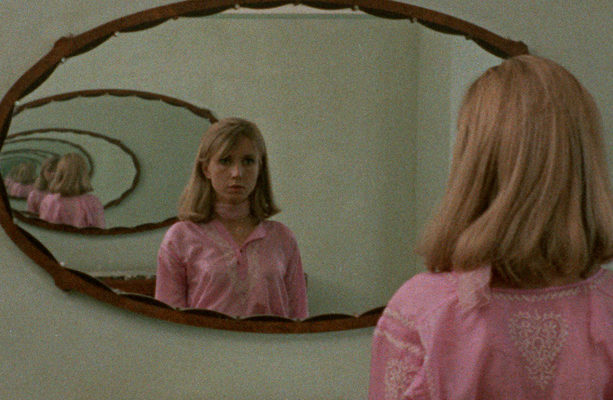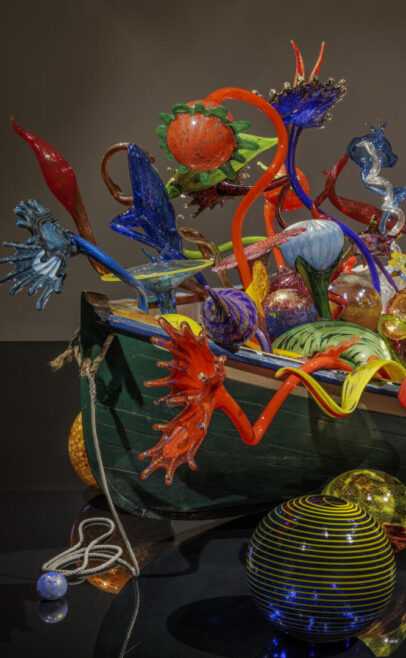Four nights and 773 minutes later, Museum Films has become the latest of a hugely select number of American venues to screen Jacques Rivette’s 1971 masterpiece, Out 1: Noli me Tangere (1971), an apotheosis for France’s storied nouvelle vague (which came into being about a dozen years earlier), and the most extreme example of the long-form modernism that would come to define 1970s European art cinema. Indeed, one might even be tempted to describe Out 1 as the defining achievement of its late 1960s/early 1970s moment, were it not for the fact that Rivette’s 13-hour magnum opus screened only once, in a working print, during its year of completion, before remaining completely unseen for nearly two more decades–and even then, not being shown in North America until its 35th anniversary year. In the greatly compressed interval that is film history, Out 1 is a Laocoön, a rediscovered object of cinematic rumor that one can only hope will inspire a new generation of formally adventurous artists, and shape our understanding of what cinema can and should be. In a very real sense, Out 1: Noli me Tangere belongs not to its own era, which it summarizes so completely, but to ours, to the film’s first (full-ish) generation of viewer, who is perhaps better equipped for the experience (thanks to our facility for long-form binge viewing) than those that have come before.
Divided into eight episodes, which Museum Films proudly screened over four consecutive nights, November 19-22, 2015, Out 1: Noli me Tangere begins by cutting between two competing experimental theater troupes, improvisationally riffing on separate Aeschylus plays; a deaf-mute beggar, Colin (Jean-Pierre Léaud, The 400 Blows), who accosts café patrons; and a small-time con-artist, Frédérique (Juliet Berto, Weekend), who, along with Colin, is slowly drawn into a conspiratorial plot that bears similarities to Balzac’s History of the Thirteen. Over the course of the first episode especially, the improvisations prove at once both the more difficult set-pieces to sit through–though their own internal rhythms, expertly captured by Rivette and his crew, quickly become hypnotic–and also the more conceptually significant. Mimicking the film’s own source in improvisation, we watch as, in effect, Out 1’s characters discover or create a narrative. Or, to use the language of film production, as it is disguised and re-imagined in the world of experimental theater, we begin with the pre-production, all that (in terms of labor to summon Brecht) which the standard, classical film-product effaces, but which the French New Wave (and Rivette most of all) was especially keen to signify. Out 1, as is deftly allegorized in the still image above, turns in on itself and gives expression to the process of its production. Rivette, career filmmaker and critic, quite simply is making a film about how he made Out 1.
These two theater troupes, as well as the broader conspiratorial faction or “cult” with which they will come to overlap, likewise call to mind a film crew that “lives and works together,” as Rivette’s dialogue emphasizes. In other words, Rivette represents his film’s production no less than his pre-production, again reinterpreting it through the analogous world of experimental theater. Colin and Frédérique, who will begin to appear in longer episodes even as the very 1960s theatrical rehearsals become less frequent, equally suggest this later stage in filmmaking to the extent that they are less agents of the narrative, than they are characters in a story, who come to consider the broader “conspiracy” that Rivette introduces as another metaphor for a dimension of film art. That is, both Colin and Frédérique become aware of the plot that surrounds them, of which they have no control; they are the marionettes in a larger world that is controlled by a small number of conspirators (or filmmakers/artists). Of course, their pursuit of the secrets behind the conspiracy also introduces the act of interpretation or criticism to the film: this, in other words, is not only a film made about the process of filmmaking, but also one that introduces the act of interpretation into its plot, by a filmmaker who notably began his professional career as a critic. More broadly, the presence of a conspiracy suggests an imposition of meaning onto chaos–still another metaphor for the film’s genesis as an object of improvisation.
What I hope this is beginning to suggest is the exhaustive and conceptually masterful sense in which Rivette has conceived his text as a mirror double for its own production. Somewhat to the same point, Out 1, more than almost any other film I know, understands its place in the world in which it was created, both in the spirit of its times as many have pointed out, and also more literally, as a guerilla-style production that exists in a Paris unaware of its making. This is to say, in scenes in which the film’s “extras” almost certainly don’t know anything about the film in which they will fleetingly appear, we really do get a sense of a city that exists and goes about its business behind the action and beyond the limits of the frame; we realize that the world that we see on screen is co-extensive with a much larger world, a world where, again like Out 1’s two-troupe conceit, multiple productions can carry on simultaneously at any given point. Rivette’s film is open to and impacted by the real world that surrounds it; it is a film that knows that it was made in a world that knows nothing about it–and would know very little for generations, except in a few film cults.
To return to this idea of Out 1 as a film about filmmaking, and film more broadly, and at the real risk of sounding (even more) outlandish in my interpretation, I would go so far as to argue that the sudden inclusion of backwards dialogue, in anticipation of David Lynch, suggests the film’s imagined projection–to carry the metaphor past post-production; editing, of course, is present throughout in Rivette’s off-beat cross-cutting. If this is going too far for the reader, let me simply appeal to the director’s subsequent masterpiece, Celine and Julie Go Boating (1974), which very much does conceive of a narrative work that is being performed or screened over and over. Within the perhaps more defeated context of 1970, Out 1 gestures toward but doesn’t quite match the more liberated and affirmative anarchy of the latter film in which the two titular heroines, the beautiful Berto included, will come to short-circuit the story. Out 1 may be the most extreme example of Rivette’s long-form tendency, one that derives from his desire to comprehensively explicate his experience of creation, in a form that allows the viewer to feel its arduous process; however, it does not quite reach the conceptual endpoint that Celine and Julie Go Boating represents.
With that said, Out 1 is a film of a fullness and summation of another sort, thanks it no small measure to the second-hand presence of his fellow Cahiers du Cinéma critics-turned-directors, François Truffaut, Jean-Luc Godard, Claude Chabrol, and Eric Rohmer. In each case, Rivette casts an actor better known for their collaborations with his fellow auteurs: Léaud for his work with Truffaut, Berto (at least in 1971) with Godard, Bernadette Lafont (Les Bonnes Femmes) with Chabrol, and Françoise Fabian (My Night at Maud’s) with Rohmer (who also appears in one of Out 1’s more memorable cameos, as a Balzac professor). There is no small amount of pleasure in remaking one’s acquaintance with these actors, not to mention spending so much time in their respective presences, as in those of Bulle Ogier (pictured), Michael Lonsdale and the film’s many other greats.
There is a real sense that this is the film, made perversely unavailable for decades, that the New Wave, rather than Rivette, had been building towards all along. At the very least, Out 1 is one of the most historically and aesthetically significant commercial releases of 2015, a film that truly now belongs to us.









